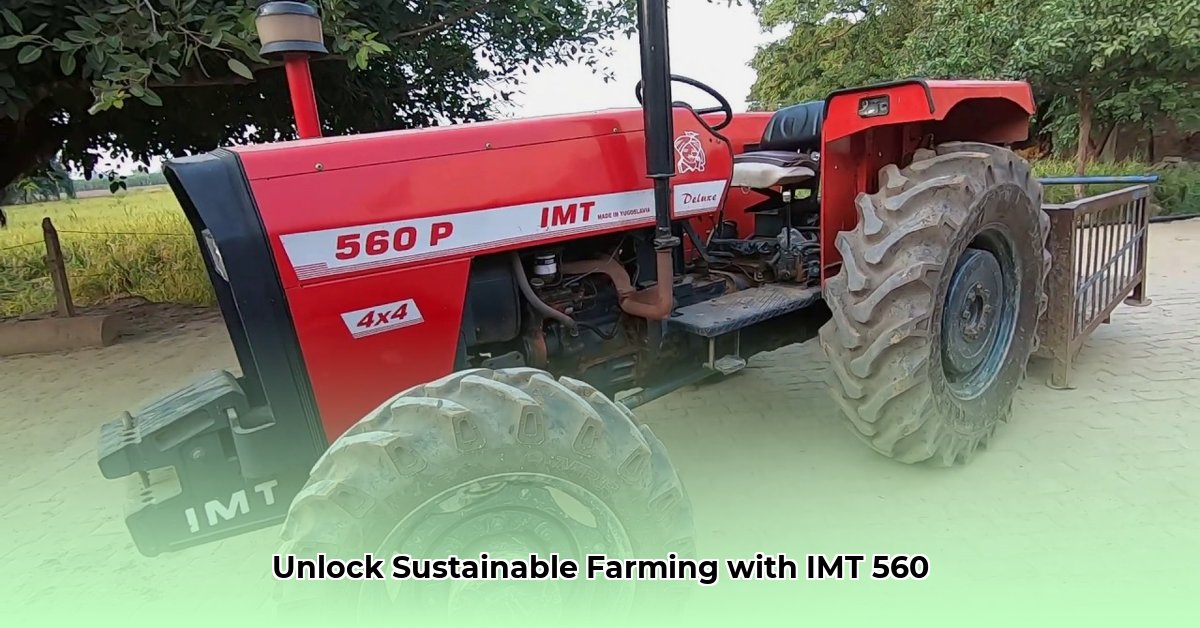
The IMT 560 tractor offers a compelling option for small-scale and sustainable farming practices. This guide provides a comprehensive overview of its capabilities, limitations, and practical applications, aiming to help farmers and agricultural extension workers make informed decisions. For more on tractor history, see this Oliver tractor history page.
Fuel Efficiency: A Key Consideration for Sustainable Farming
The IMT 560's 23.8-gallon fuel tank and efficient engine design contribute to lower fuel costs and a reduced environmental footprint. However, fuel consumption varies depending on operating conditions and the tractor's maintenance. Isn't maximizing fuel efficiency crucial for sustainable agriculture? Regular maintenance is vital for optimal fuel economy. A study by Michigan State University shows that implementing proper maintenance and operation techniques can significantly improve tractor fuel efficiency. 1
Power and Performance: Matching the Tractor to Your Needs
The IMT 560 delivers 59 horsepower, suitable for many smaller farms and specific crops. However, this power output might be insufficient for large-scale operations or heavy-duty implements. Consider your farm's size and tasks: will the 59 horsepower meet your requirements, or will you need to supplement with manual labor or smaller implements? The choice depends on your particular agricultural context.
Simplicity and Maintenance: Accessibility and Affordability
The IMT 560's straightforward design translates to easier and more affordable maintenance. Its simpler mechanics allow for easier self-repair, a significant advantage for farmers in remote areas with limited access to specialized mechanics. This simplicity, however, comes at the cost of fewer advanced features, potentially impacting overall efficiency in certain tasks. Therefore, it balances affordability with potential trade-offs in task completion time.
Hydraulic System: Choosing Compatible Implements
The IMT 560 offers a hydraulic flow rate of 4.8 gpm (gallons per minute). This is critical when selecting implements; choosing incompatible implements can significantly decrease productivity. Always confirm that the flow rate meets the hydraulic requirements of all your planned implements before making a purchase.
Actionable Steps for Optimal IMT 560 Utilization
To maximize the IMT 560's contribution to your sustainable farming practices, follow these steps:
- Assess Your Needs: Carefully evaluate your farm's size, soil conditions, and tasks. Does the IMT 560 meet those requirements?
- Implement Compatibility: Ensure all implements are compatible with the tractor's hydraulic system.
- Fuel-Saving Techniques: Implement fuel-efficient operating practices like proper tire inflation and regular maintenance.
- Efficient Task Planning: Plan tasks accordingly, accounting for the tractor's power limitations and supplementing with manual labor as needed.
- Prioritize Maintenance: Regular maintenance is vital for optimal performance and fuel efficiency.
IMT 560 Tractor: A Balanced Perspective
| Feature | Advantages | Disadvantages |
|---|---|---|
| Fuel Efficiency | Lower fuel costs; reduced environmental impact. | Dependent on operating conditions and maintenance. |
| Engine Power | Affordable; suitable for smaller-scale operations. | Limited power may restrict implement choices. |
| Maintainability | Simple design; easier and cheaper maintenance, especially in remote areas. | Fewer advanced features; potential reduction in overall efficiency. |
| Hydraulic System | Simple and reliable. | Limited flow rate; may limit compatible implement options. |
Long-Term Sustainability with the IMT 560
Sustainable farming requires a long-term perspective. To maximize the IMT 560's long-term value:
- Plan for Upgrades: Consider financial planning for future upgrades or replacement.
- Invest in Training: Improve efficiency and operational skills through training programs.
- Community Engagement: Participate in your local agricultural community and support policies that foster sustainable farming practices.
The IMT 560 is a valuable tool, but its success within a sustainable farming system depends on careful planning, operator skill, and a comprehensive understanding of its strengths and limitations.